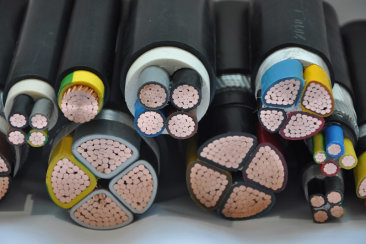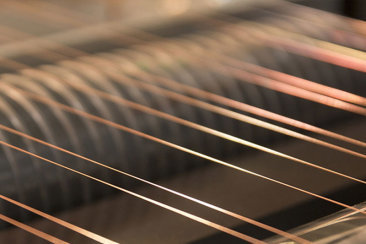The difference between environmentally friendly cables and low smoke halogen-free cables
Release time:
2023-08-28
Low smoke and halogen-free cables are often used in many key projects, such as fire protection, monitoring, and alarm systems. They are commonly referred to as environmentally friendly cables, but in fact, environmentally friendly cables do not refer to low smoke and halogen-free cables. The following is a detailed analysis of the differences between environmentally friendly cables and low smoke and halogen-free cables: 1. Halogen free: The use of green and environmentally friendly insulation layer, sheath, and specially made oxygen barrier material not only has good electrical and physical mechanical properties, but also ensures that the product does not contain halogens, solves the "secondary pollution" formed during combustion, and avoids the carcinogenic "dioxin" substances produced by traditional PVC wires during combustion. 2. High flame retardancy: Environmentally friendly cables fully guarantee their high fire safety requirements for buildings. In the event of a fire, cables are not easily combustible and can prevent the spread of flames and the expansion of disasters after combustion. 3. Low toxin: The insulation and sheath do not contain heavy metals such as lead and cadmium that are harmful to human health, and will not cause pollution to soil and water sources during cable use and disposal. And after rigorous toxicity experiments, the white mice were unharmed under the prescribed experimental conditions. 4. No corrosive gas generated: The use of new special coating materials that are environmentally friendly does not produce gases such as HCL during production, use, and combustion. It emits very little acid gas and causes minimal damage to personnel, equipment, and instruments, making it more environmentally friendly. 5. Waterproof and UV resistant: Green and environmentally friendly materials with special molecular structures are used to ensure ultra-low water absorption. Special UV absorbers give the product excellent UV protection. This ensures the safety and prolongs the service life of this type of product* The first company to initiate the name "environmentally friendly cable" was a Japanese company, which established the FN (Economic) ecological cable standard as its product standard. Western countries such as the UK also developed advanced requirements for environmentally friendly cable standards, which gradually spread to the world. 6. High transmittance: The smoke generated during cable burning is extremely thin, which is beneficial for personnel evacuation and firefighting work. The product has a light transmittance of over 40%, far exceeding the standard of less than 20% for traditional flame retardant cables.

Low smoke and halogen-free cables are often used in many key projects, such as fire protection, monitoring, and alarm systems. They are commonly referred to as environmentally friendly cables, but in fact, environmentally friendly cables do not refer to low smoke and halogen-free cables. The following is a detailed analysis of the differences between environmentally friendly cables and low smoke and halogen-free cables:
1. Halogen free:
The use of green and environmentally friendly insulation layer, sheath, and specially made oxygen barrier material not only has good electrical and physical mechanical properties, but also ensures that the product does not contain halogens, solves the "secondary pollution" formed during combustion, and avoids the carcinogenic "dioxin" substances produced by traditional PVC wires during combustion.
2. High flame retardancy:
Environmentally friendly cables fully guarantee their high fire safety requirements for buildings. In the event of a fire, cables are not easily combustible and can prevent the spread of flames and the expansion of disasters after combustion.
3. Low toxin:
The insulation and sheath do not contain heavy metals such as lead and cadmium that are harmful to human health, and will not cause pollution to soil and water sources during cable use and disposal. And after rigorous toxicity experiments, the white mice were unharmed under the prescribed experimental conditions.
4. No corrosive gas generated:
The use of new special coating materials that are environmentally friendly does not produce gases such as HCL during production, use, and combustion. It emits very little acid gas and causes minimal damage to personnel, equipment, and instruments, making it more environmentally friendly.
5. Waterproof and UV resistant:
Green and environmentally friendly materials with special molecular structures are used to ensure ultra-low water absorption. Special UV absorbers give the product excellent UV protection. This ensures the safety and prolongs the service life of this type of product* The first company to initiate the name "environmentally friendly cable" was a Japanese company, which established the FN (Economic) ecological cable standard as its product standard. Western countries such as the UK also developed advanced requirements for environmentally friendly cable standards, which gradually spread to the world.
6. High transmittance:
The smoke generated during cable burning is extremely thin, which is beneficial for personnel evacuation and firefighting work. The product has a light transmittance of over 40%, far exceeding the standard of less than 20% for traditional flame retardant cables.






